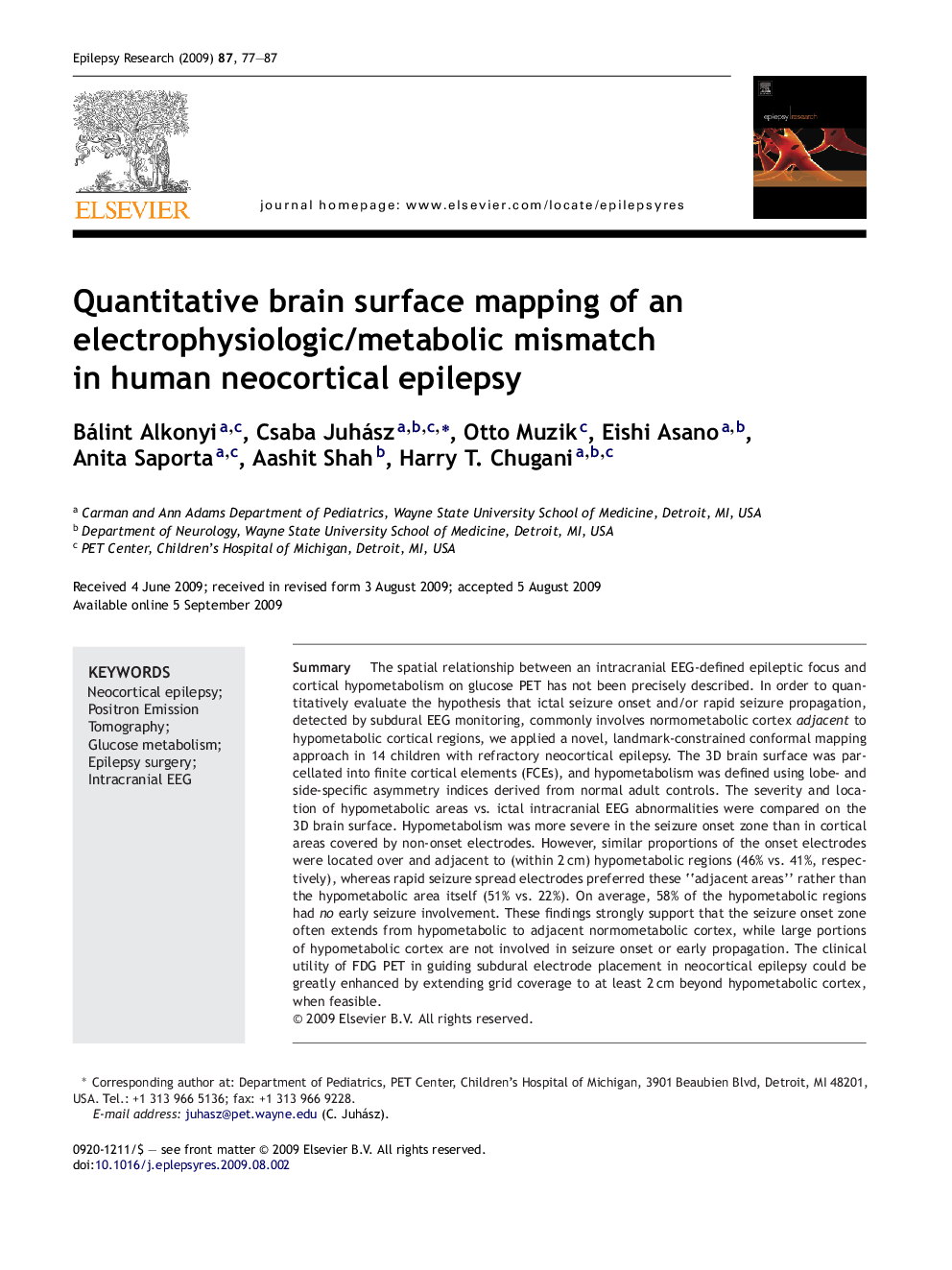| Article ID | Journal | Published Year | Pages | File Type |
|---|---|---|---|---|
| 3052863 | Epilepsy Research | 2009 | 11 Pages |
SummaryThe spatial relationship between an intracranial EEG-defined epileptic focus and cortical hypometabolism on glucose PET has not been precisely described. In order to quantitatively evaluate the hypothesis that ictal seizure onset and/or rapid seizure propagation, detected by subdural EEG monitoring, commonly involves normometabolic cortex adjacent to hypometabolic cortical regions, we applied a novel, landmark-constrained conformal mapping approach in 14 children with refractory neocortical epilepsy. The 3D brain surface was parcellated into finite cortical elements (FCEs), and hypometabolism was defined using lobe- and side-specific asymmetry indices derived from normal adult controls. The severity and location of hypometabolic areas vs. ictal intracranial EEG abnormalities were compared on the 3D brain surface. Hypometabolism was more severe in the seizure onset zone than in cortical areas covered by non-onset electrodes. However, similar proportions of the onset electrodes were located over and adjacent to (within 2 cm) hypometabolic regions (46% vs. 41%, respectively), whereas rapid seizure spread electrodes preferred these “adjacent areas” rather than the hypometabolic area itself (51% vs. 22%). On average, 58% of the hypometabolic regions had no early seizure involvement. These findings strongly support that the seizure onset zone often extends from hypometabolic to adjacent normometabolic cortex, while large portions of hypometabolic cortex are not involved in seizure onset or early propagation. The clinical utility of FDG PET in guiding subdural electrode placement in neocortical epilepsy could be greatly enhanced by extending grid coverage to at least 2 cm beyond hypometabolic cortex, when feasible.
